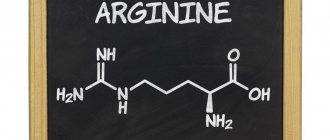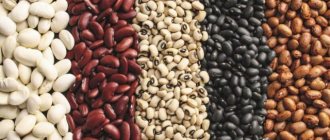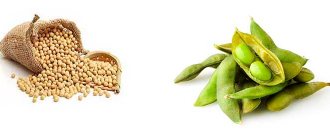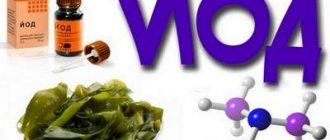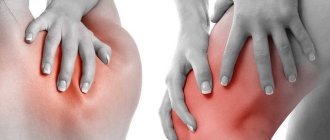The result of an unbalanced diet, constant stress, excessive physical activity can be a deficiency of vitamin A. Symptoms of such a deficiency can be: dry skin, brittle hair, the appearance of transverse stripes on the nails, eye disease, blurred vision in the dark, dyspepsia, slowed physical and intellectual development in children. In this article we will tell you: how to avoid vitamin A deficiency and improve its absorption? And also, we will answer the question: What foods contain vitamin A and in what quantity is it necessary for children and adults.
- Vitamin A - in which foods?
- What foods contain vitamin A - table
- What factors promote and hinder the absorption of vitamin A? Vitamins and microelements that improve the absorption of vitamin A
- Vitamins and microelements that should not be combined with vitamin A
Vitamin A: which foods contain it?
Products rich in vitamin A can be found in any store.
If you eat these foods regularly and prepare them properly, you will not experience a lack of retinol. Table: foods containing vitamin A in large quantities.[1,2]
| Products | Serving Size | Vitamin A (mcg) RAE[3] |
| Vegetables and fruits | ||
| Vegetables | ||
| Sweet Potato or Sweet Potato, Peeled, Boiled | 1 medium | 1096 |
| Pumpkin, canned | 125 ml (½ cup) | 1007 |
| carrot juice | 125 ml (½ cup) | 966 |
| Carrots, cooked | 125 ml (½ cup) | 653-709 |
| Carrots, raw | 1 medium (61 g) | 509 |
| Spinach, cooked | 125 ml (½ cup) | 498 |
| Turnip greens, cooked | 125 ml (½ cup) | 290-466 |
| Tomato, raw | 1 medium (123 g) | 300 |
| Romaine lettuce (Roman lettuce, romaine) | 250 ml (1 cup) | 258 |
| Red lettuce (lettuce) | 250 ml (1 cup) | 218 |
| Chinese collard greens, cooked | 125 ml (½ cup) | 190 |
| Red pepper, cooked | 125 ml (½ cup) | 106 |
| Fruits | ||
| Apricots, dried (dried apricots, apricots) | 60 ml (¼ cup) | 191 |
| Apricots, canned | 125 ml (½ cup) | 169 |
| Cereal products | This food group contains very small amounts of retinol. | |
| Milk and dairy products | ||
| Cheese | ||
| Cow's milk cheese, hard | 50 g | 243 |
| Cheddar, no fat | 50 g | 220 |
| Cow's milk cheese, semi-soft | 50 g | 204 |
| Munster, Neuchatel, Gruyère, Cheddar, Colby | 50 g | 132-158 |
| Ricotta | 125 ml (½ cup) | 140-156 |
| Blue / Roquefort | 50 g | 99-147 |
| Processed cheese slices, Cheddar | 125 | |
| Milk | ||
| Skim, 1%, 2%, chocolate milk | 250 ml (1 cup) | 137-163 |
| 3.3% homogenized | 250 ml (1 cup) | 119 |
| Soy milk | 250 ml (1 cup) | 103-104 |
| Meat and meat products | ||
| Meat | ||
| Liver, turkey, cooked* | 75 g | 16950 |
| Liver, veal, cooked* | 75 g | 15052-15859 |
| Giblets, turkey, cooked | 75 g | 8053 |
| Liver, beef, cooked* | 75 g | 5808-7082 |
| Liver, lamb, cooked* | 75 g | 5618-5836 |
| Liver, pork, cooked* | 75 g | 4054 |
| Liver, chicken, cooked* | 75 g | 3222 |
| Fish and seafood | ||
| Eel, cooked | 75 g | 853 |
| Tuna, raw or cooked | 75 g | 491-568 |
| Herring, salted | 75 g | 194 |
| Mackerel, cooked | 75 g | 189 |
| Shellfish, cooked | 75 g | 128 |
| Salmon, cooked | 75 g | 112 -118 |
| Oysters, cooked | 75 g | 110 |
| Meat alternatives | ||
| Eggs, cooked | 2 large | 190-252 |
| Fats | ||
| Fish fat | 5 ml (1 teaspoon) | 1382 |
Peculiarity! The presented products will be absorbed better if they are consumed fresh. Before use, it is very important to familiarize yourself with the daily dosage of retinol. This will avoid overdose and its side effects.
Conditions under which vitamin A is absorbed
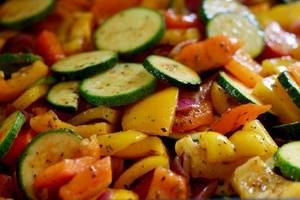
Under certain conditions, this vitamin is absorbed better:
- Simultaneous intake of vitamins A and E. They complement each other and enhance the effect. Products that contain vitamin A and E at the same time: carrot juice, dried apricots (dried apricots, apricots), tomatoes, spinach, sweet potatoes, pumpkin, broccoli.
- Eating fresh vegetables and fruits. Heat treatment destroys this substance, it disappears because the person does not receive the necessary vitamins.
- Healthy lifestyle. Bad habits lead to the body no longer absorbing nutrients. When smoking or drinking alcohol, retinol is not absorbed properly. When you give up bad habits, the absorption of retinol increases several times.
- Healthy bowel function. If the microflora in the intestines is healthy, retinol is absorbed perfectly. However, if the functioning of this organ is disrupted, the substances necessary for the body are excreted without being absorbed.
- Consumption of foods containing fat. They increase the flow of bile and thereby promote the absorption of retinol.
Value for human health
Retinol is an essential component in every person's diet. A sufficient amount of vitamin increases the body's resistance to adverse factors, prevents a decrease in immunity and promotes rapid recovery.
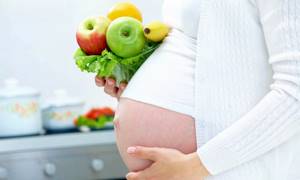
Vitamin A is especially useful for pregnant women. It helps the body adapt to changes, and also takes part in the formation of fetal organs. That is why expectant mothers should include oil, fruits, vegetables, fish and other foods rich in this vitamin in their diet.
Daily norm
The daily intake of this substance varies depending on the gender and age of a person:
- Children: 600 mcg.
- Women: 800 mcg.
- Men: 700 mcg.
- Women during pregnancy: 1200 mcg.
- Women during breastfeeding: 1300 mcg.
- People of retirement age: 700 mcg.
Peculiarity! Women during pregnancy and breastfeeding need more retinol, since at this time it is necessary not only for the woman, but also for the child. A woman and a growing body need nutrients.
Which vegetables contain the most vitamin A?
Experts highlight the following list of vegetables high in vitamin A[4]:
- Sweet potato, yellow and orange varieties (961 mcg);
- Carrots (852 mcg);
- Spinach (469 mcg);
- Parsley (421 mcg);
- Pumpkin (288 mcg);
- Chinese cabbage (223 mcg);
- Broccoli (77 mcg);
- Zucchini (56 mcg);
- Onions (50 mcg);
- Tomato (42 mcg);
- Iceberg lettuce (25 mcg);
- Sweet pepper (23 mcg).
Vegetables contain a lot of retinol. They can be used either individually or mixed. An excellent source of vitamin A are fresh salads and pureed vegetables. It is very important to consume vegetable soups. They help fill the human body with necessary substances.
If salads are prepared from vegetables, they should be seasoned with oil or sour cream. In no case should you use mayonnaise, as it will not allow beta-carotene to be properly absorbed.

Sweet potatoes, yellow and orange varieties (961 mcg)
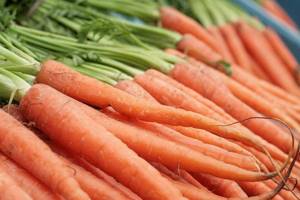
Carrots (852 mcg)
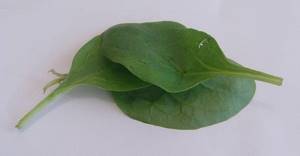
Spinach (469 mcg)
Vitamin A in carrots
Carrots are rich in this substance. Experts advise using it daily. Before use, it is important to familiarize yourself with the vitamin content of the product and the rules of consumption. If certain mistakes are made, product absorption may decrease by up to 90%. Only with high absorption of the substance will the human body benefit.
How much vitamin A is in carrots[5]
- One medium-sized carrot weighs 128 g and contains 1 g of vitamin A.
- 100 g of carrots contain 0.8 g of vitamin A.
- 1 cup (236 ml) of carrot juice contains 2.2 g of vitamin A.
Vitamin A may not be fully absorbed if a person eats carrots incorrectly or prepares them in the wrong way.
How to eat carrots to absorb vitamin A

In order for the human body to absorb the maximum amount of the substance, you need to remember several conditions under which vitamin A is absorbed:
- Carrots are eaten with fats. It is absorbed much better this way. Without fats, 90% of the substance will be eliminated from the body. This means that the body will not receive any benefit. Carrots must be mixed with butter and sour cream. They help nutrients be better absorbed in the intestines.
- It is better to use fresh product. When frying, vitamins disappear and are not absorbed by the body at all. You need to accustom yourself to regularly eating fresh carrots. It can be eaten at any time of the day, but absorption is better in the first half of the day.
- This vitamin is perfectly absorbed in liquid form. It is useful to drink freshly squeezed carrot juice.
Important! This product can be mixed with honey, butter or sour cream to enhance beneficial substances and better absorption of beta-carotene. However, it is necessary to remember. that an overdose of the vitamin can lead to side effects. You should not eat more than four to five carrots per day.
Fried carrots will not bring any benefit; they become harmful to the body. Fried carrots can increase the amount of cholesterol in the blood, so this treatment is unacceptable.
How does deficiency manifest itself?

Vitamin A hypovitaminosis is a serious pathological condition. Most often, it develops over many years, without making itself felt for a long time.
The main causes of retinol deficiency:
- nutritional – vitamin deficiency is often caused by an inadequate diet;
- pregnancy and lactation;
- growth and puberty;
- impaired digestion and absorption in the intestine;
- severe debilitating diseases, including cancer.
It is extremely difficult to recognize hypo- or vitamin deficiency. Symptoms usually appear with severe deficiency. The general condition may not be disturbed. Such patients rarely complain and consult a doctor. They most often attribute their condition to other reasons.
Vitamin A deficiency has the following symptoms:
- twilight vision impairment;
- xerophthalmia (hypertrophic and degenerative processes in the cornea);
- dry skin, jams and cracks;
- premature appearance of wrinkles;
- fragility of nails;
- hair loss;
- decreased sense of smell due to dry nasal mucosa;
- frequent inflammatory diseases of the respiratory system due to impaired barrier function of the bronchial mucosa;
- violation of hormonal regulation, infertility.
Important! Even vitamin deficiency (an extreme degree of vitamin deficiency) can be asymptomatic for a long time.
Which fruits have vitamin A?

Fruits are filled with large amounts of this substance. That is why they must be consumed regularly. The highest content is presented in the following fruits[4]:
- Apricot (96 mcg);
- Persimmon (81 mcg);
- Grapefruit (46 mcg);
- Mandarin (34 mcg);
- Plum (17 mcg);
- Nectarine (17 mcg);
- Peach (16 mcg);
- Orange (11 mcg);
Important! Fruits should be consumed fresh, without heat treatment. Thus, the beneficial substances are preserved in it and do not disappear. Fruits should be eaten ripe. Immature and overripe fruits contain little vitamin, and they can also cause harm to the human body and cause gastrointestinal upset.
How much vitamin A is in fish oil?
Fish oil is incredibly beneficial for the human body; it contains Omega-3 polyunsaturated fatty acids, which prevent the development of cardiovascular diseases.
Fish oil contains 30 mg of vitamin A per 100 g of product. This drug should be used with caution to prevent an overdose of vitamin A.
Peculiarity! Fish oil is most often consumed in capsule form. They are easy to take and do not cause disgust. This complex contains a detailed dosage, so that a person can avoid an overdose. Usually capsules are taken 1-2 times a day , but the exact dosage is applied to the capsules. It depends on the age and gender of the person.
What is the danger of an overdose of vitamin A in children?
The most serious complication of increased intake of vitamin A into a child’s body is bulging of the fontanelles and the appearance of fluid in the brain (hydrocephalus). Spontaneous bleeding occurs due to liver damage, bleeding gums appear, and nosebleeds are typical.
An overdose of vitamin A in children leads to:
- to increased activity (excitement);
- increase in temperature;
- lack of appetite;
- hair begins to fall out;
- seborrhea appears.





